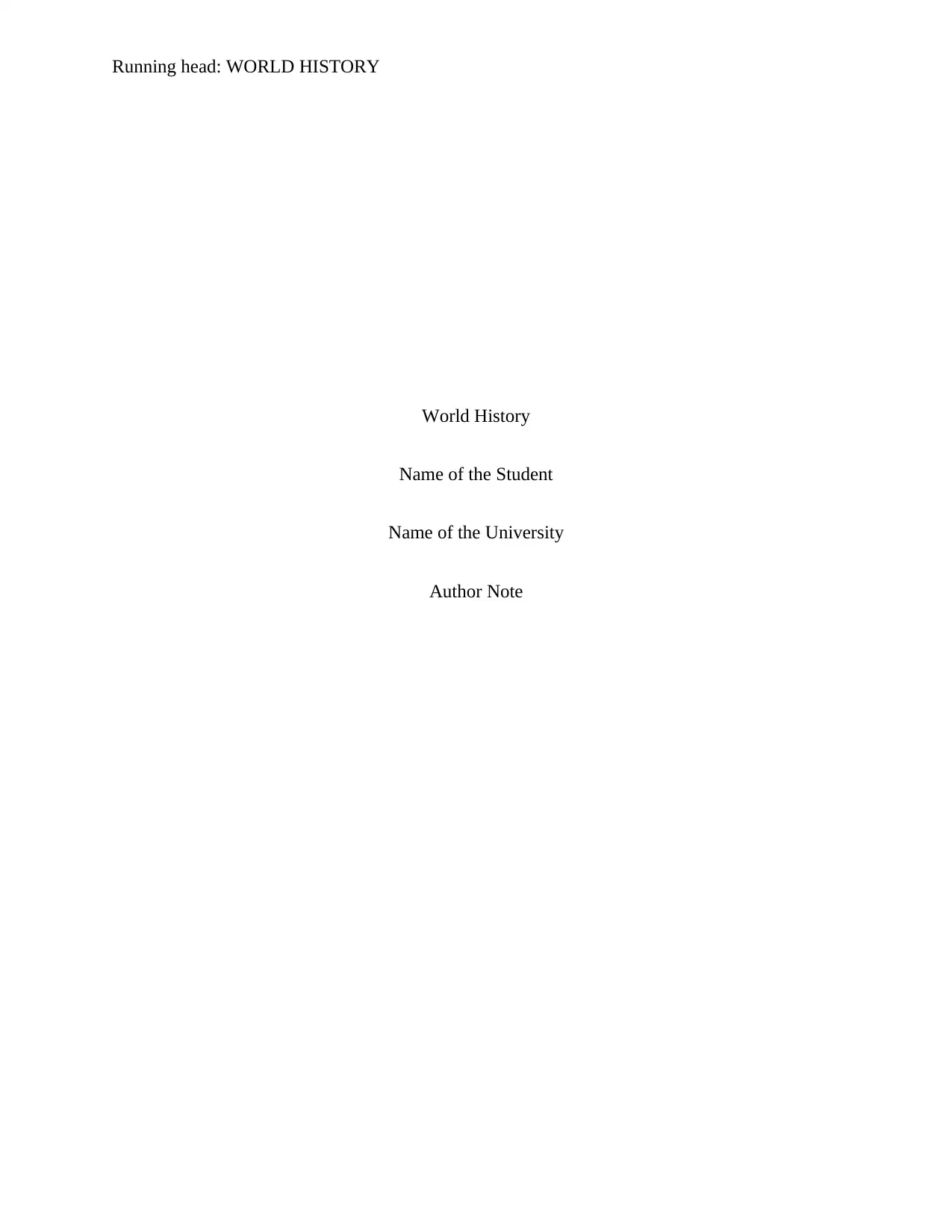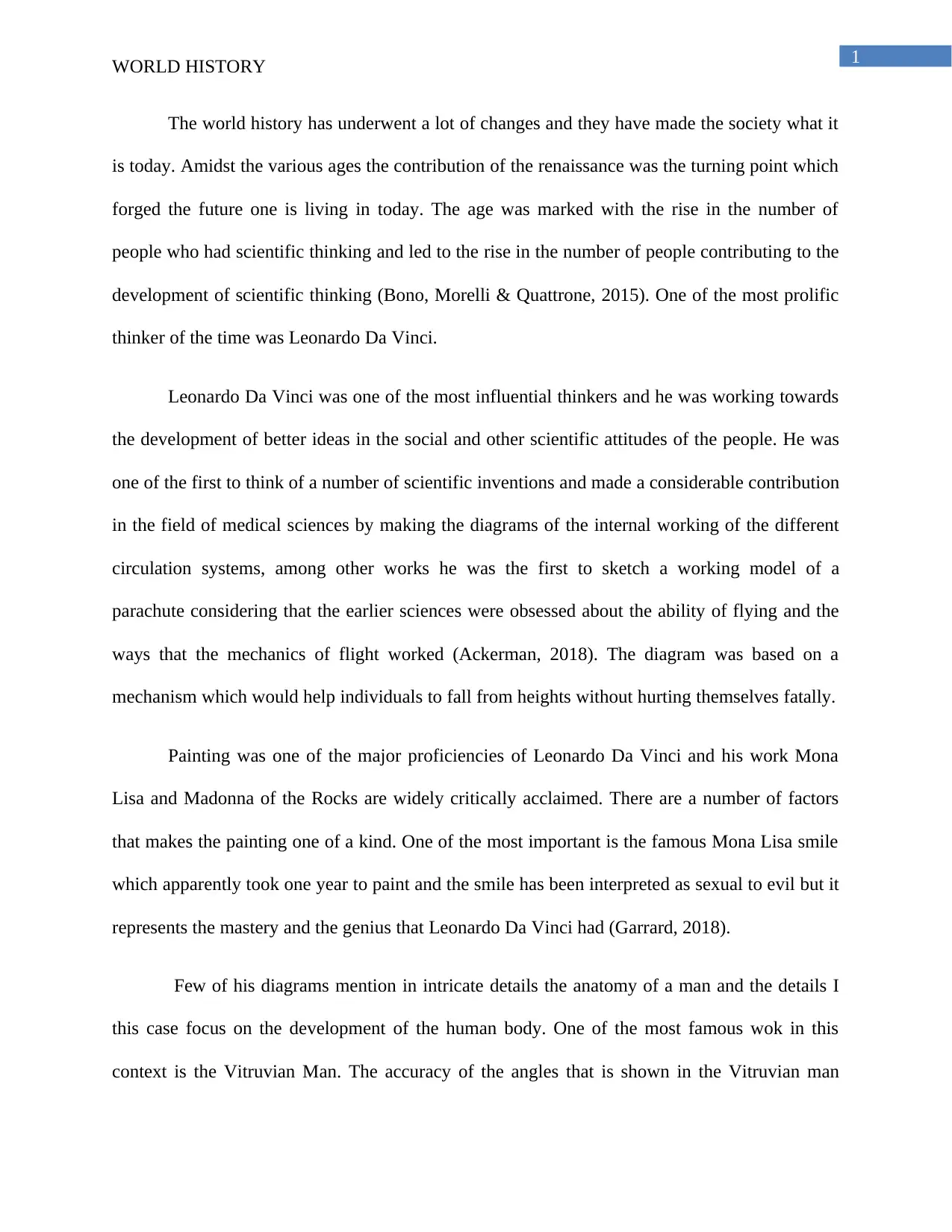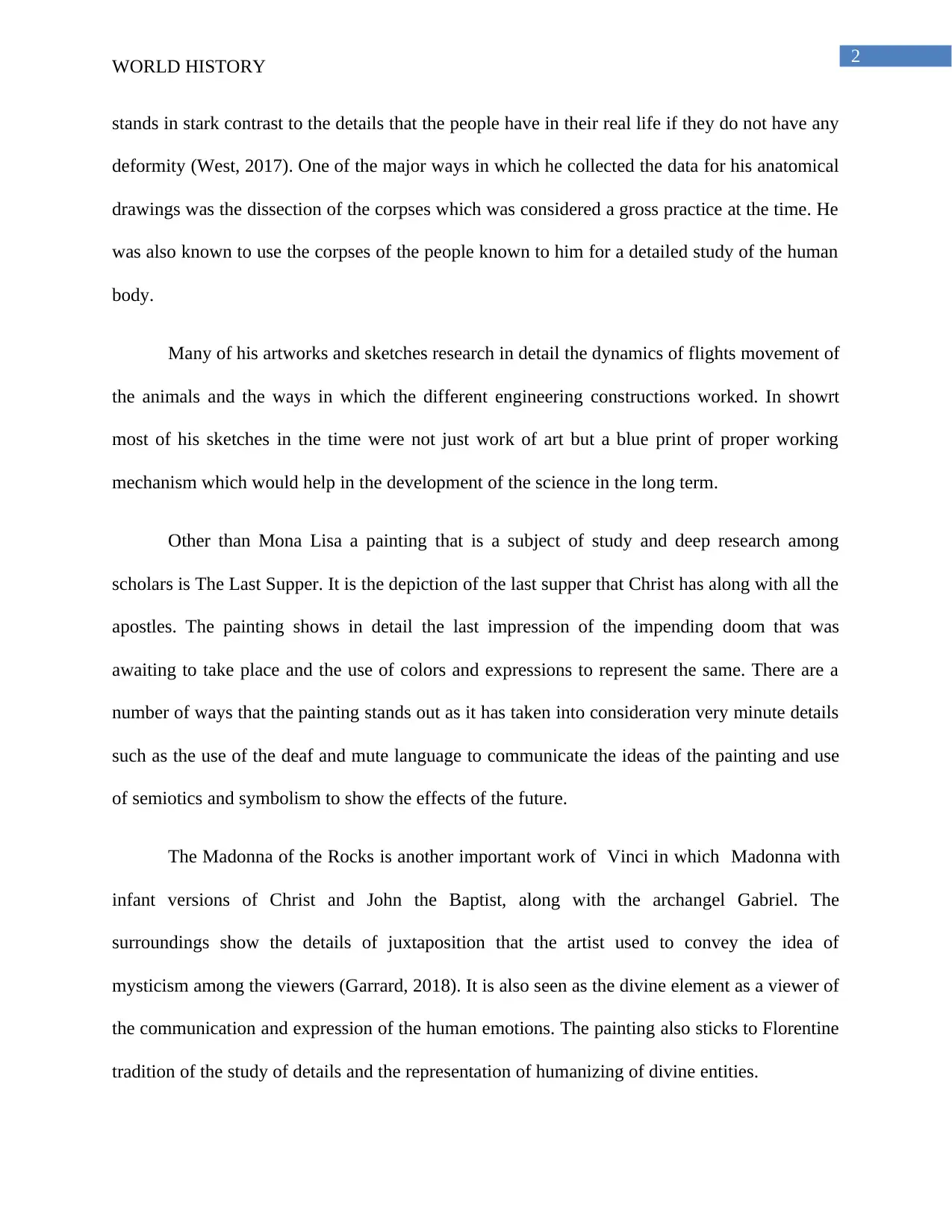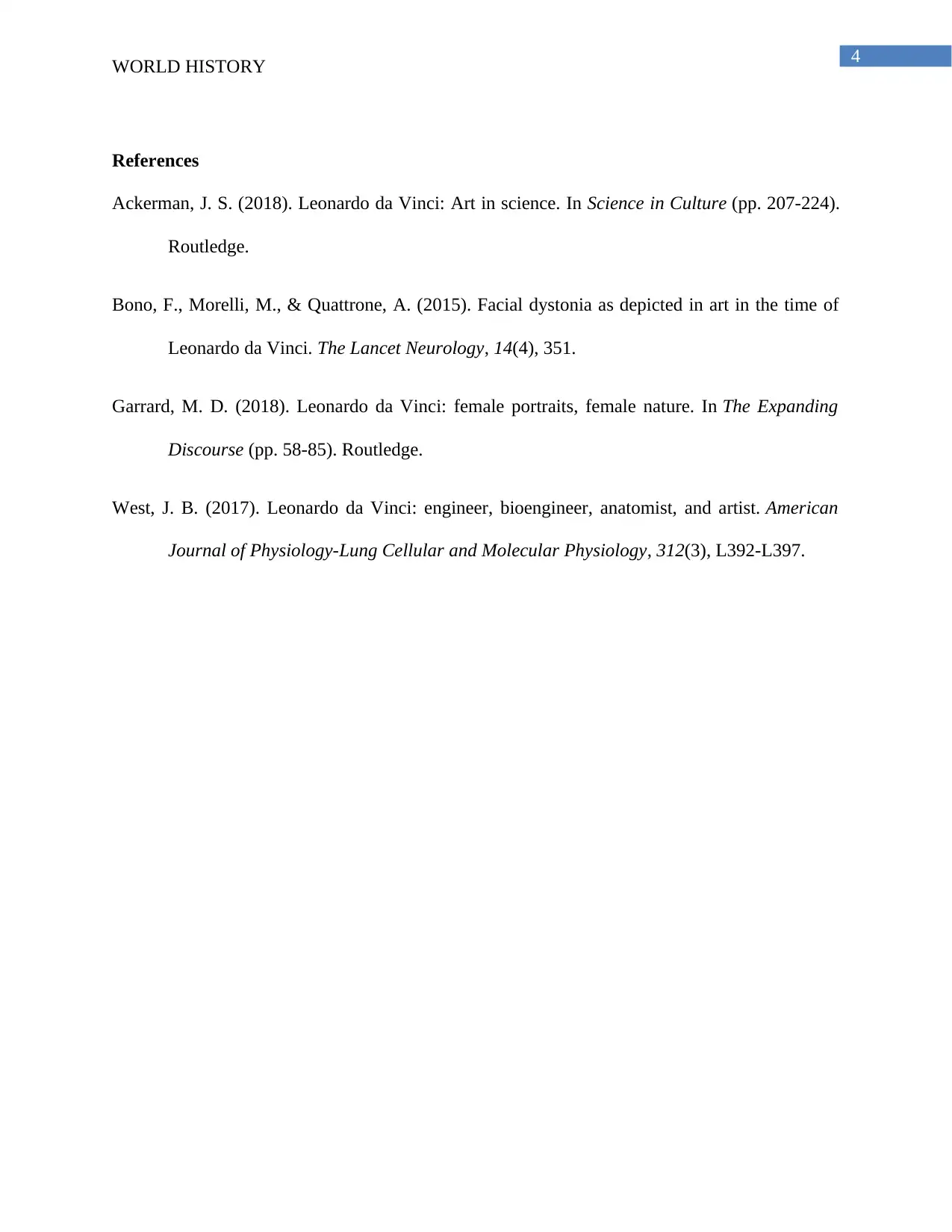World History Essay: Renaissance and Leonardo Da Vinci's Contributions
VerifiedAdded on 2021/09/14
|5
|965
|87
Essay
AI Summary
This essay delves into the profound impact of Leonardo da Vinci on world history, particularly during the Renaissance. It highlights da Vinci's multifaceted genius, emphasizing his contributions to art, science, and engineering. The essay analyzes his iconic artworks, such as the Mona Lisa and The Last Supper, exploring their artistic techniques, symbolism, and cultural significance. Furthermore, it examines da Vinci's scientific endeavors, including his anatomical drawings, inventions, and engineering designs. The essay underscores how his innovative ideas and meticulous observations transformed the way people viewed the world, influencing subsequent generations of artists, scientists, and thinkers. By examining da Vinci's diverse achievements, the essay illustrates the enduring legacy of this Renaissance polymath and his pivotal role in shaping modern society. The essay also refers to how he used dissection of corpses to collect data for his anatomical drawings. Also, his sketches were not just work of art but a blueprint of proper working mechanism which would help in the development of the science in the long term.
1 out of 5











![[object Object]](/_next/static/media/star-bottom.7253800d.svg)